
by Sandra Gulland | Nov 27, 2018 | Adventures of a Writing Life, Resources for Readers, The Shadow Queen |
This is an exciting winter for me. Not only will I be giving a keynote at the San Miguel Writers Conference in February, but my novel The Shadow Queen has been chosen as “The Big Read.”

What this means is that readers all over San Miguel will be reading The Shadow Queen. (Yes!)
From an article in the Atencion:
“For most of us, who never mastered the intricacies of French history in high school, or never studied it at all, this richly detailed portrait of life in the French court under the rule of Louis XIV will thrust us into an absorbing world, described by an extraordinarily talented writer. It is such an outstanding example of historical fiction that it may open up other alluring worlds to readers who have never ventured into the genre before.
“Every year, the Writers’ Conference hosts the Big Read, inviting everyone in town to read the same book by one of the Conference keynote speakers and then to join one of many Big Read discussion groups around town. We provide discussion questions, present a program to provide background information on the book and the author, and invite all discussion group participants to meet the author in person at a private reception.”
On January 14 there will be an event held to present the novel to book clubs. I’m not able to be there (we will be on the Pacific Coast at that time), but I’m working with the organizing committee to help put together an entertaining presentation.
The first thing I suggested was that they serve beignets, a French pastry featured throughout the novel. That turned out to be fairly easy to arrange since San Miguel is blessed with an excellent French pastry chef.
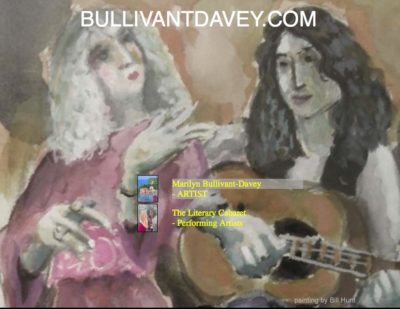
The second thing I suggested was that we recruit my actor friends Rick Davy and Marilyn Buillivant — of Literary Cabaret fame — to put on a short, dramatized reading from the novel. They are keen, and it’s going to be wonderful, but I have since discovered that scripting scenes is not easy!
The committee has also arranged for a filmmaker, Dennis Lanson, to make a short film to show at the event. It will likely partially be an interview of me about the novel — my process and how The Shadow Queen came to be, etc. — and partially images of 17th century theatre and some of the characters in the novel, along with my voice-over commentary. This has entailed a search for images that are of good-enough quality to be projected onto a large screen. Again: not easy!
In going though old blog posts and selecting images, I’ve begun to fall under the spell of that era again. For example, OTT Baroque theatre:

How is it possible not to swoon?
I love, too, this image of Madame de Montespan, the woman we all love to hate:

In order to do all this coherently, I’ve been rereading The Shadow Queen. It has been years since I was in that world, and I have to confess that I’m finding it delightful.
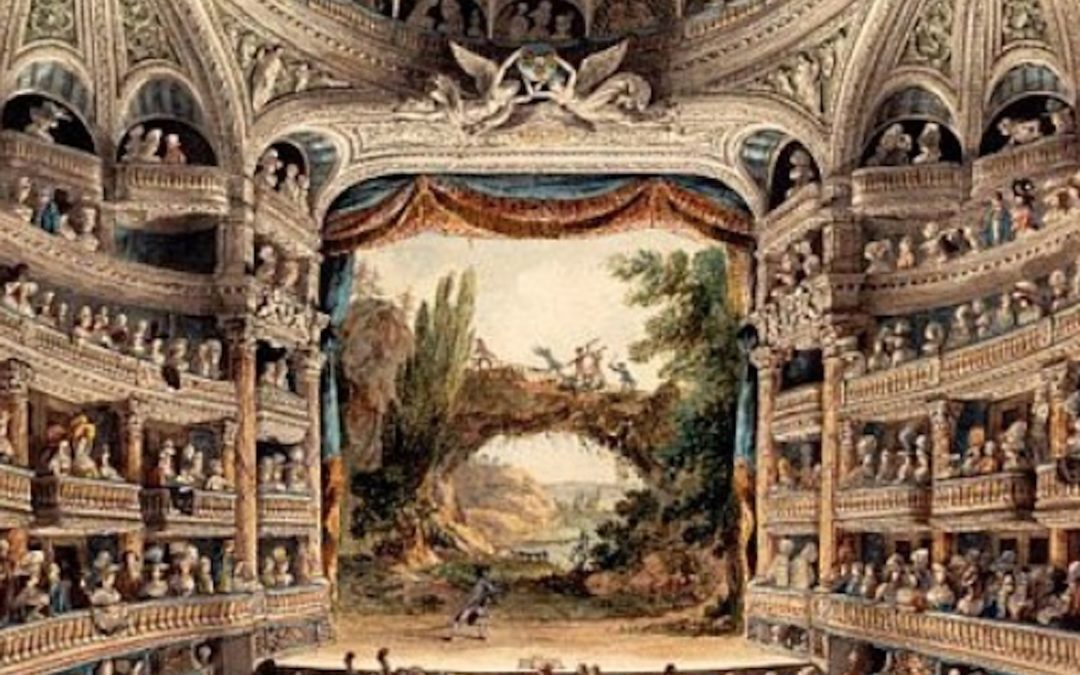
by Sandra Gulland | Nov 18, 2018 | Baroque Explorations, On Research, The Game of Hope, The Shadow Queen |
In preparing for a video presentation of The Shadow Queen to book clubs here in San Miguel de Allende, I’ve been revisiting the world of that novel — especially the magical world of 17th century theatre in Paris. Rereading this blog post, written long ago, I was captured once again by the story of Molière and his much younger wife Armande. Theirs was a story I was planning to write before I got spirited away into the world of The Game of Hope.
And so here, to share, is my post from 2009, spruced up with wonderful visuals. (Thank you, Internet!)
I’m doing a great deal of research right now into the theater world of 17th century France. My focus is on Claude de Vin des Oeillets, the daughter of actors, but along the way I’ve been encountering many wonderful characters. So many stories!
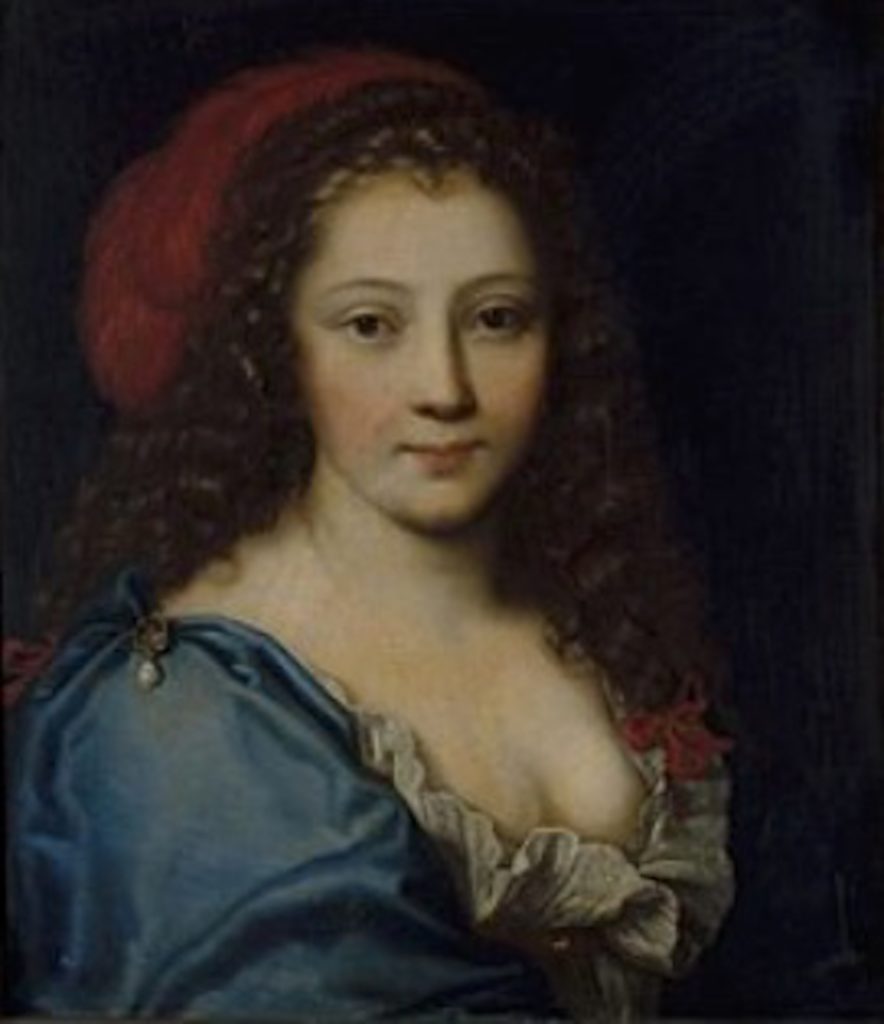
Molière’s wife Armande, 23 years his junior
One, in particular, is that of the actress Armande Béjart, Molière‘s wife. He was 40 when they married, she only 17. She had known him all her life, and must have regarded him as something of a father and teacher. Indeed, he had taken charge of her education as a child.
They were a miserable couple. It is said that Armande was heartless and vain. She was considered a frivolous, giddy flirt, and was quite likely unfaithful (possibly to Lauzun, and possibly to the comte de Guiche); certainly Molière was consumed by jealousy. After the birth of a son, and then a daughter, they lived apart, yet they continued to work together closely on the stage. Molière could simply not stop doting on her . . . and neither could the public. She was a brilliant actress, and Molière was inspired to write many roles specifically for her.
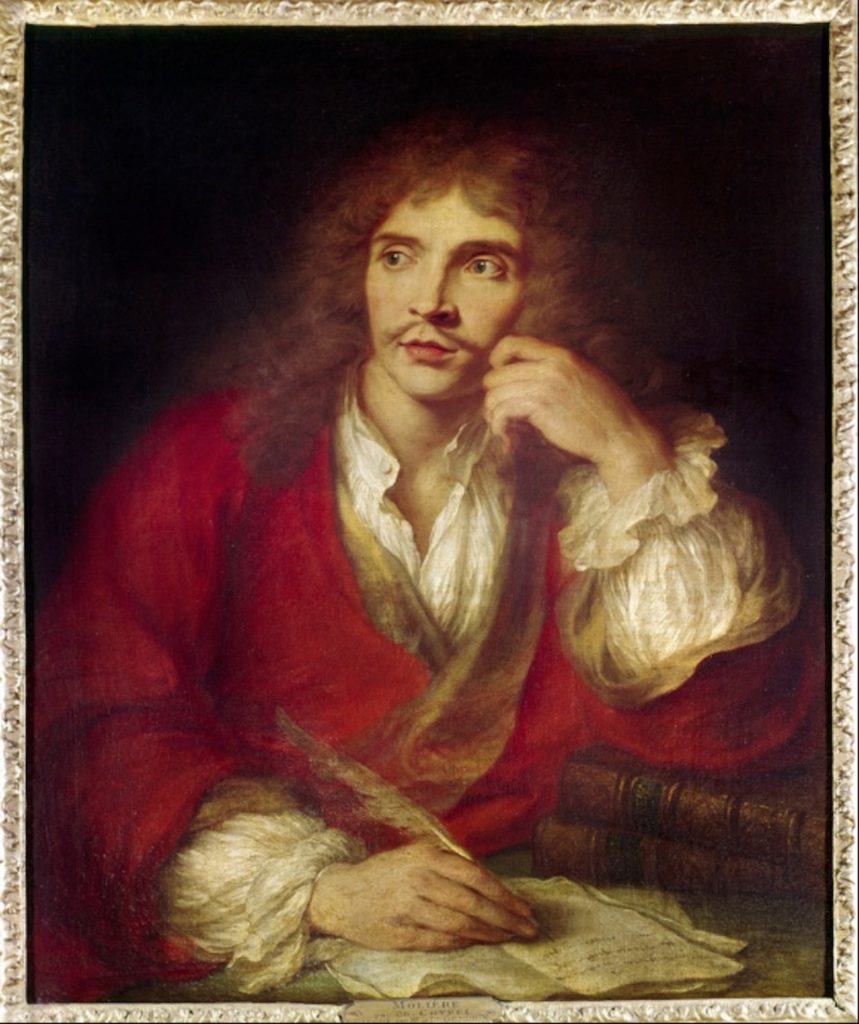
Molière
A mutual friend eventually persuaded Armande to reconcile with her increasingly consumptive and love-sick husband. She did, putting him on a strict meat diet, yet he continued to decline. On the day of the 4th performance of “The Imaginary Invalid,” in which he starred, Armande begged him not to play. He refused, knowing how many depended on the performance for their livelihood.
At the end of play, Molière (ironically playing the part of a hypochondriac) had a convulsion, which he tried to disguise with a harsh laugh. The curtain was hastily lowered and he was carried to his house. Always a comedian, he said on his deathbed: “I have set a detestable example. From now on, no playwright will be content until he has killed an actor.”
After her husband’s death, Armande proved to be anything but giddy and frivolous, fighting passionately for her husband’s right to be respectfully buried by the church (a fight she sadly lost), and then running Molière’s theatrical company with astonishing confidence and aplomb, making a number of difficult decisions that proved to be very successful. He would have been pleased.
I love her saucy attitude, but most of all I love how talented she was, and how capable she proved to be as a widow. Someday I hope to write about her.
[Note: This post was originally published on Hoydens and Firebrands, a website of women who write about the 17th century.]
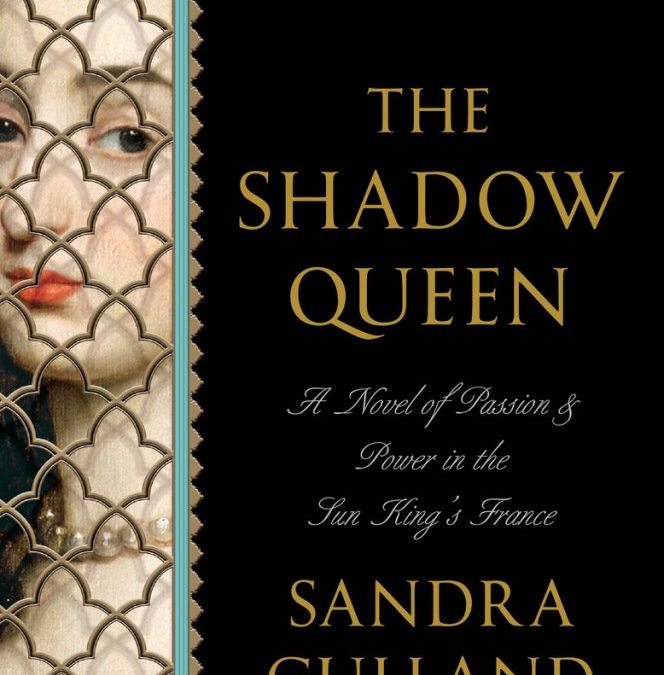
by Sandra Gulland | Mar 30, 2018 | Publication, Questions Readers Ask, Resources for Book Clubs, Resources for Readers, The Shadow Queen |
A significant number of early reviewers of my new novel THE SHADOW QUEEN have expressed displeasure with the title; they feel it is misleading. They expected the novel to be the story of the Sun King’s official mistress, Athénaïs, Madame de Montespan, a position often referred to as “the shadow queen.” The title led readers to believe that they were going to get one story, when in fact they got another. I apologize if they feel that they were mislead.
These readers were responding to the Advance Readers’ Copies (“ARCs”) of the novel. The hardcover, with cover-flap copy, will make it clearer what, in fact, the story is about, and I hope that this will dispel some of the confusion.
Why that title?
But to address the concerns of some of my readers: Why have I titled this novel The Shadow Queen?
The main character of the novel is Claude des Oeillets (dit Claudette), an impoverished young woman from the world of the theatre. Socially scorned and denounced by the church, she lives on the fringes of society. As well, as the daughter of a theatrical star, she exists in her mother’s shadow.
In contrast, Athénaïs, Madame de Montespan, lives at the heart of high society. She becomes Claudette’s obsessive passion, seeing in her a perfect life, a life without hunger and fear, a life of ease and beauty. Everything Claudette’s life is not.
The novel is about many things, but at its core is the relationship between these two woman, Claudette and Athénaïs, who are close in age and share many of the same interests, yet are worlds apart. In the end, they become dependent upon one-another. Claudette, as Athénaïs’s devoted and even start-struck servant, is willing to do anything for her—up to a point.
And it’s at that point that Claudette must step out of the shadows—and into the light of her own life.
Over the five years I was writing this novel, I considered many, many titles. In the end, I was very happy with the title The Shadow Queen, a title enthusiastically embraced by a group of 50 writers, a number of whom had read the novel and felt that it was appropriate.
I am touched by the passionate concern of my readers, even when critical. Of course I have been both surprised and disquieted that some have objected. I personally feel that the title The Shadow Queen captures the spirit of this story on a number of levels. Claudette exists in the shadow of her mother, a drama queen. When she joins Athénäis at court, she becomes her shadow, the shadow of the official “Shadow Queen.” And, although the story is very much about the ever-fascinating Athénäis—as well as about Claudette’s obsession with her and all that she represents—it’s really a metaphorical title, more than a literal one.

by Sandra Gulland | Oct 19, 2012 | Adventures of a Writing Life, The Shadow Queen |
“The Next Big Thing” is a “chain-blog” going around writers on the Net. I got tagged by historical novelist Stephanie Cowell, author of CLAUDE AND CAMILLE. You can see her own blog on The Next Big Thing here.
Ten Interview Questions for the Next Big Thing: What I’m working on now
What is your working title of your book?
IN THE SERVICE OF THE SHADOW QUEEN
Where did the idea come from for the book?
In researching MISTRESS OF THE SUN, I became intrigued by the life of Claude des Oeillets. She was the daughter of a theatrical star and confidential maid to the infamous Madame de Montespan, the Sun King’s “power mistress.” As well, she had a daughter by the King and dealings with Madame Voisin, the “witch” who was burned at the stake.
Basically, I was curious. Claude’s worlds were fascinating: the theater, the Court, the underground world of witchcraft. Too, she had an intimate view of Montespan, an endlessly fascinating and complex villainess.
What genre does your book fall under?
Historical fiction. I like to think I write literary historical fiction, but that is for readers to decide.
Which actors would you choose to play your characters in a movie rendition?
I’ve always thought Nicole Kidman would be fantastic as Madame de Montespan. As for the others … impossible for me to say. I so rarely watch movies.
What is the one-sentence synopsis of your book?
This is the hardest question you could ask a novelist; it is also the most important question to know how to answer. Here’s my attempt:
IN THE SERVICE OF THE SHADOW QUEEN is a historical novel set in 17th century France and based on the life of Claude des Oeillets, who leaves the disreputable make-believe world of the theater for a prestigious position at Court—only to discover that life at Court is itself an illusion, and one that disguises a horrifying sin.
Will your book be self-published or represented by an agency?
I have an agent, and the book will be published in the spring of 2014 by HarperCollins in Canada and Doubleday in the U.S.
How long did it take you to write the first draft of your manuscript?
One year. At least. And I’m working on the 8th and final draft.
What other books would you compare this story to within your genre?
Another difficult question! I’ve been told that my work is similar to that of Tracy Chevallier. A lovely thought, if true.
Who or what inspired you to write this book?
Curiosity about the world of 17th century French theater and my on-going fascination with Madame de Montespan.
I like to write about people who come into the Court world — or theatre world, or underground world — from outside, who view it as a traveller might. This allows us to see it through their eyes, the curious rituals, the details of daily life, the manners. These are the things most of interest to me.
What else about your book might pique the reader’s interest?
I did quite a bit of research into 17th century theater for this novel. I think readers will find it interesting to learn how theater companies were run, how the audiences behaved, how spectacles were performed, and how actors learned their lines … for starters.
In turn, I am tagging two gifted novelists and warmly invite you to visit their sites:
Caroline Leavitt, author of PICTURES OF YOU. You can read about her Next Big Thing here.
Lauren B. Davis, author of the Giller long-listed OUR DAILY BREAD
I’m supposed to tag five authors, in fact, but I’m traveling and it’s difficult. Caroline and Lauren will tag their fair share in turn, I know. If you haven’t read their work, I highly recommend that you do so. Also, be sure to read what their Next Big Thing is. It’s sure to be fantastic!
Message for tagged authors:
Rules of the Next Big Thing
***Use this format for your post
***Answer the ten questions about your current WIP (work in progress)
***Tag five other writers/bloggers and add their links so we can hop over and meet them.
***Include the link of who tagged you and this explanation for the people you have tagged.
***Be sure to line up your five people in advance.
Ten Interview Questions for the Next Big Thing:
What is your working title of your book?
Where did the idea come from for the book?
What genre does your book fall under?
Which actors would you choose to play your characters in a movie rendition?
What is the one-sentence synopsis of your book?
Will your book be self-published or represented by an agency?
How long did it take you to write the first draft of your manuscript?
What other books would you compare this story to within your genre?
Who or what inspired you to write this book?
What else about your book might pique the reader’s interest?











